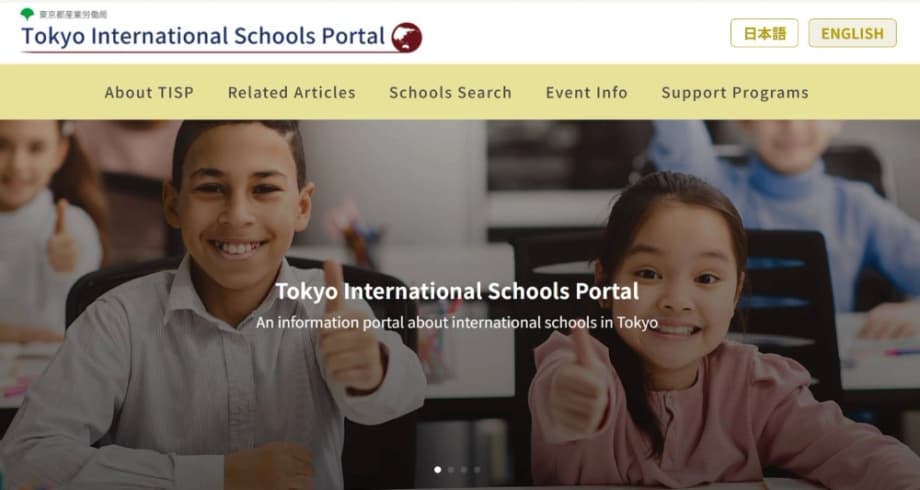What is the Tokyo International Schools Portal
Tokyo Metropolitan Government has launched a bilingual website that gathers details on international schools across the capital. The aim is straightforward, to help families compare schools quickly and to support companies that want to bring global talent to Tokyo. For years, parents pieced together information by jumping between individual school sites, social media threads, and advice from friends. The new portal offers a single destination with consistent, comparable information so that families can make choices with less stress and fewer unknowns.
- What is the Tokyo International Schools Portal
- What families and schools will find on the site
- How this ties to Tokyo talent competition
- Inside Tokyo’s international school landscape
- Admissions, timing and cost
- Opening or expanding a school in Tokyo
- How to use the portal effectively
- Cultural and enrichment life for families
- Key Points
The project fits a larger push to present Tokyo as a leading base for finance and international business. Officials have said the city cannot attract global professionals unless daily life works smoothly for their households. Schooling is one of the first questions recruiters and relocation managers hear from candidates. By placing key facts in one place, the portal seeks to remove friction from the decision to move to Tokyo.
Why Tokyo built it
The site is part of the Tokyo 2050 strategy, under strategy 12 titled Global Finance. That plan looks beyond business licenses and office districts. It focuses on a world class environment for living, including education options that are clear to navigate for residents whose first language is not Japanese. The portal brings together public information on international schools and, critically, offers guidance for school operators who are considering opening or expanding in the city. Growing capacity and transparency helps families and supports the talent goals of the capital.
Launch details
The Tokyo International Schools Portal went live on Friday, October 24, 2025, at 14:00 Japan time. It is available in English and Japanese. The Tokyo Metropolitan Government announcement with an outline of features is posted on its English site at this link.
What families and schools will find on the site
The portal presents a database of international schools in Tokyo with practical facts in a consistent format. Entries include school locations, capacity, average class sizes, curriculum, and tuition bands, along with video introductions. The site is designed to let parents filter options by factors that matter for everyday life, from where they live and work to the curriculum they prefer and the grade levels they need.
For parents and guardians
Families can search by area, school type, and curriculum, then open school pages for details on class size, languages taught, and admissions. Clear, comparable descriptions help parents save time and avoid surprises. The portal can be used as a shortlist tool before arranging campus tours and interviews. It can also help midyear arrivals who need to understand which grades still have space and how waiting lists work in different parts of the city.
For school operators
School leaders and potential operators will find a section that explains support systems for establishing or expanding international schools in Tokyo. This includes information about procedures, consultations, and the policy framework the city offers to increase high quality international education capacity. A clearer path for expansion can encourage new campuses or additional grades, which benefits families facing tight availability in certain age groups.
How this ties to Tokyo talent competition
Schooling shapes relocation decisions even for professionals with strong job offers. Families weigh commuting time, course offerings, language support, and whether siblings can attend the same campus. Cities that make these answers easy to find gain an edge when companies ask staff to relocate or when specialists consider a move on their own. Singapore and Hong Kong have long emphasized the clarity of international school options. Tokyo is now answering that expectation with a tool that reduces guesswork.
The portal complements other steps to attract international talent. These include business support measures, international financial initiatives, and improvements in English language public information. A smoother school search lightens the load on corporate human resources teams and relocation consultants and gives candidates more confidence that Tokyo can meet family needs.
Impact on existing communities
International schooling in Tokyo serves both expatriate families and long term residents who want global curricula. A clearer overview supports both groups. Parents already in Tokyo can use the portal to track new programs and campus expansions, while newcomers can build a realistic plan before they arrive. Increased transparency can also help schools showcase their strengths to a broader audience.
Inside Tokyo’s international school landscape
Tokyo’s international school scene is diverse. Families can choose the International Baccalaureate, British programs that lead to IGCSE and A levels, or an American pathway with Advanced Placement and other options. Some schools have spacious suburban campuses with athletic facilities, while others sit in dense central neighborhoods close to business districts. The range gives families many routes to a strong education, but the variety can also make comparisons tricky. The new portal is designed to bring structure to that search.
Examples across curricula
The American School in Japan offers an American style program from early years through high school. With more than 120 years of history and two campuses, it combines academic pathways that include Advanced Placement with an extensive set of clubs, arts, and athletics. The school emphasizes inquiry and independent thinking, and it supports a diverse community of nationalities.
The British School in Tokyo follows the National Curriculum for England across two central campuses, Azabudai Hills for early years and primary, and Showa for secondary. Students pursue a broad and balanced program in academics, music, art, sport, and drama. Graduates move on to universities around the world. The school pairs strong exam preparation with outdoor learning trips that build teamwork and leadership.
Tokyo International School is an IB World School that stresses inquiry based learning and student voice. The community represents many nationalities and aims to build independence, creativity, and intercultural competence. Staff with deep IB experience support a philosophy that values student choice and reflective learning.
Nishimachi International School blends rigorous academics with a strong commitment to language learning in English and Japanese. Small class sizes and an intimate community are part of its identity, and daily Japanese classes help students engage with local culture. Graduates pursue higher education with a foundation that balances global perspective and local understanding.
Phoenix House International School offers a British prep model for primary years, with a Tokyo campus and an enrichment campus in Hokkaido. The program pairs core subjects with creative and collaborative projects and places value on character development. A learning support and therapy hub connected to the Tokyo campus provides services that parents can access directly, including assessments and speech and language therapy.
Curriculum choices explained
The International Baccalaureate is a continuum that includes the Primary Years Programme, Middle Years Programme, and the Diploma Programme for the last two years of secondary school. It is known for inquiry based teaching, an emphasis on critical thinking, theory of knowledge, and creativity, activity, service. The Diploma Programme includes a set of subjects across disciplines and an extended essay, accepted by universities around the globe.
An American style program often blends a broad curriculum with Advanced Placement courses in high school. AP exams allow students to demonstrate college level mastery in specific subjects. Schools may also offer concurrent enrollment with universities, independent study, or project based options. The approach tends to allow flexibility in course choice while ensuring progress toward graduation requirements.
British schools usually follow a sequence that leads to IGCSE examinations around age 16 and then to A levels for the final two years. Students narrow their subject focus at A level, which can yield depth in areas like mathematics, sciences, or humanities. University admissions teams are familiar with these qualifications across many countries.
Admissions, timing and cost
Tokyo’s international schools admit students year round, but key grades can fill early. Families arriving in late summer face more competition for places. Many schools handle waiting lists by grade and by language profile. Midyear entry is possible in many cases, especially when a school expands capacity or when families depart during the year. The portal helps parents see a broader range of options so they can identify schools with space that match their curriculum needs.
Typical application steps include an online form, recent report cards, teacher references, and sometimes a placement assessment or interview. For younger children, play based observations and short assessments are common. Families should ask how schools support English as an additional language and how they assess language readiness at different grade levels.
Tuition in Tokyo’s international sector often runs into the millions of yen per year. Parents should budget for application and enrollment fees, development or capital fees, school bus service, lunches, uniforms, and materials. Some schools offer sibling reductions or corporate billing arrangements. Scholarships are limited, though a few schools have need based or merit based aid. The portal’s tuition information gives a clearer first look at affordability so families can plan before scheduling tours.
Opening or expanding a school in Tokyo
Rising demand, especially in certain age ranges and neighborhoods, increases the value of clear guidance for operators. The portal’s support section outlines how Tokyo Metropolitan Government engages with prospective and existing schools on establishment and expansion. That includes information about the consultation process and how to navigate facility planning and compliance in the capital.
Operators should consider accreditation pathways through bodies such as the Council of International Schools, New England Association of Schools and Colleges, or Western Association of Schools and Colleges, and for IB schools, authorization by the International Baccalaureate. Accreditation does not replace local legal requirements, but it signals quality to families and universities. The portal makes it easier for new entrants to understand expectations and for established schools to assess growth plans.
How to use the portal effectively
Start by filtering for curriculum and grade levels, then narrow by location. Build a shortlist that balances educational fit and commute time. Use the school pages to identify contact points for admissions and arrange campus visits. During visits, focus on class size, student support services, language pathways, arts and athletics, and how schools integrate Japanese culture. Confirm waiting list policies, placement tests, and onboarding for students who are new to the curriculum. Families moving with teenagers should ask how credits transfer and how the school supports university applications.
A quick checklist
- Confirm curriculum pathway and graduation or exam requirements
- Ask about English as an additional language and learning support services
- Review class size, teacher experience, and accreditation status
- Map commute times, school bus routes, and start and end times
- Request a breakdown of tuition and all annual and one time fees
- Understand waiting list rules and assessment steps for entry
- Ask about school culture, extracurricular choices, and parent community
- Clarify how students transition between curricula and prepare for university
Cultural and enrichment life for families
Tokyo offers exceptional learning experiences beyond the classroom. A highlight for many families is teamLab Borderless in the Azabudai Hills complex, an immersive art museum where digital works respond to movement and touch. Children and adults explore large scale interactive rooms that encourage curiosity and creative thinking, a natural complement to inquiry based teaching in many international schools.
Families can also explore the Odaiba Retro Museum, which recreates everyday spaces from the Showa era. The venue turns history into a sensory experience, valuable for children who learn by seeing and doing. These museums sit within a broader network of parks, sports facilities, libraries, and community centers across the city that support healthy routines for students.
Music and performance opportunities are plentiful. Tokyo Opera City, concert halls, and community stages host competitions and youth programs that draw international participants. Schools often partner with local institutions, giving students a chance to develop their talents in settings that match their interests.
Key Points
- Tokyo Metropolitan Government launched a bilingual portal that centralizes information on international schools in the capital
- The site supports families with comparable data on location, class size, curriculum, and tuition, plus video introductions
- A support section guides operators that plan to open or expand international schools in Tokyo
- The launch aligns with Tokyo 2050 strategy, strategy 12 Global Finance, to attract and retain global talent
- The portal helps newcomers and current residents navigate a diverse landscape that includes IB, British, and American programs
- Clearer information can ease admissions planning, budgets, and midyear transitions
- Families are encouraged to use the portal to shortlist schools, schedule visits, and verify support services












